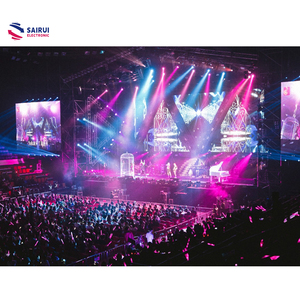
All categories
Featured selections
Trade Assurance
Buyer Central
Help Center
Get the app
Become a supplier

(948 products available)


































A sequential LED module is a special kind of LED light that has a built-in circuit board with light-emitting diodes (LEDs) for advanced lighting. These lights are mainly used in vehicles for turn signals, taillights, accent lighting, and other customizable lighting applications. One of the most recognized features of LED sequential lights is the dynamic and attractive light patterns they are capable of. When the turn signal is activated, the LEDs light up one after the other in a flowing or sweeping pattern. This not only looks great but also makes the signal more noticeable to other road users.
1. 12V vs 24V LED Modules
12V LED sequential turn signal lights are the most common and popular choice among vehicle owners. They are perfect for most car lighting applications, easy to install, and compatible with a wide range of vehicles. The 12V LED modules are available in a variety of styles, including one-row and multi-row layouts, with different shapes and light effects.
24V LED sequential turn signals are designed for use in larger vehicles like trucks and buses. Their higher voltage allows for longer runs of LED lights without significant voltage drop, making them suitable for larger vehicles with longer wiring lengths. The 24V modules are also designed to be more robust and durable, with features like enhanced weather resistance and protection against electrical surges.
2. Color Options
White LED sequential modules are the most commonly used for daytime running lights (DRL) and various other lighting applications. They provide a bright, clean light that enhances the vehicle's visibility and aesthetics. Some white LEDs may have a cooler or bluish tint (5000K-6500K) that distinguishes them from others.
Amber LEDs are mainly used for turn signals and side markers. They are bright and highly visible, making them the ideal choice for turn signals, as they can easily be noticed by other road users.
Red LEDs are used for taillights, brake lights, and accent lighting. They provide a warm and vibrant red glow that enhances the vehicle's visibility and style, particularly at night or in low-light conditions.
Sequential LED modules are also available in dual-color or RGB options. These versatile modules can produce a wide range of colors and effects, allowing for customizable lighting.
3. Number of LEDs
The number of LEDs on a sequential LED module can vary significantly, from a few to several dozen, depending on the size and intended use of the module. Smaller modules with fewer LEDs are suitable for use in tight spaces or as accent lighting, while larger modules with more LEDs provide more significant illumination and are ideal for primary lighting functions.
4. Waterproof Rating
Waterproof sequential LED modules come with an Ingress Protection (IP) rating. The IP ratings indicate the level of protection against water and dust ingress. For instance, IP65-rated LEDs can withstand water splashes from any direction and are also dust-resistant. They are suitable for use in most weather conditions. IP67-rated LEDs can be submerged in water for a short time and are completely dust-tight. These IP67-rated modules are used in extreme weather conditions or applications where immersion in water is possible.
Every sequential LED module has its specifications. The specification of an LED module determines its performance and application. Here are the key specifications to consider;
LED Type;
The type of LED used in a sequence matters. The type of LED affects the brightness and color quality. Some types of LEDs are SMD 5050, SMD3528, and SMD2835.
Voltage;
Every sequential LED module has a designated voltage. Common voltage options are 12V and 24V. The voltage affects the brightness and power consumption of the module.
Wattage;
The power consumed by an LED module is directly proportional to its brightness. Higher wattage modules are brighter. The wattage of a sequential LED module ranges from 0.24W to 2.5W or more.
Color Temperature;
Color temperature determines the color appearance of the LED light. LED modules offer different color temperatures ranging from cool white, warm white, to daylight.
Brightness (Lumen);
Brightness is an important specification of a sequential LED module. The brightness affects where the LED module can be applied. Higher brightness modules can be used in places with high ambient light. Brightness is measured in lumens, and the sequential LED module has a lumen range of 100 to 5000 lumens.
Beam Angle;
The beam angle of a sequential LED module determines the coverage area of its light. Modules with a wider beam angle have a broader coverage area.
IP Rating;
The IP rating of a sequential LED module indicates the level of resistance to dust and water. It also shows the ability of the LED module to withstand harsh environments. Higher IP-rated modules can be used outdoors or in industrial settings.
Cutting Length;
Some LED modules allow users to cut them into smaller lengths to suit different applications. The cutting length is specified in terms of the number of LEDs or the length in millimeters.
It is important to maintain the sequential LED module to prolong its lifespan and performance. Sequential LED modules have superior quality, so the maintenance process is straightforward. Dust and dirt are the primary enemies of LED modules. They can clog the light emitted by the LED module. The best way to get rid of dust and dirt is to use a microfiber cloth or soft brush. Wipe or dust the LED module regularly. Cleaning the LED module regularly will prevent the build-up of dirt and dust. If the LED modules are in a dirty environment, increase the frequency of cleaning.
Harsh chemicals can damage the LED module. Use only mild cleaning solutions or isopropyl alcohol to clean the LED module. Before cleaning, ensure the power supply is turned off. This will prevent electrical shock and damage to the LED module. Also inspect the wiring and connections periodically. Ensure all the connections are secure. Loose connections can cause flickering lights or module failure.
When buying sequential LED modules for sale, business buyers should consider the following:
Application
What does the intended use of the LED module entail? Is it for lighting a license plate, interior lighting, or exterior lighting like headlights or taillights? The application will determine the type of module needed, as different ones are designed for various purposes.
Size and Form Factor
LED modules come in different sizes and shapes. It is vital to choose one that fits the intended application area. For example, a larger module might be required for headlight upgrades, while a smaller one would be suitable for interior lighting.
Brightness and Color
The brightness level of the sequential LED module should be considered. Some applications require higher brightness, while others might need a softer glow. Moreover, the color of the LEDs is to be chosen based on personal preference and compliance with automotive lighting regulations.
Voltage and Power Requirements
The voltage and power requirements of the LED module should match those of the vehicle. Most LED modules operate at 12V, but some might require a different voltage. Additionally, the power consumption of the module should be considered to avoid overloading the vehicle's electrical system.
Quality and Reliability
Choosing a reputable brand known for quality and reliability is important. High-quality modules are built to last and provide consistent performance. Reading reviews and seeking recommendations can help find reliable products.
Ease of Installation
Consider the complexity of installing the sequential LED module. Some modules come with plug-and-play connectors, making them easy to install without any modifications. Others might require extra wiring or soldering, which can make the installation more complicated.
Features and Functionality
Additional features and functionalities of the sequential LED module should be considered. Some modules have advanced technologies like adaptive lighting or programmable features. These can enhance the lighting performance and provide a more customized experience.
Price
Price is always an important factor to consider. LED modules are available at different prices, so it is important to set a budget before shopping. However, the cheapest option is not always the best. Finding a good balance between affordability and quality is important.
Below are the steps on how to replace a sequential LED turn signal with an LED module.
Safety precautions
Before working on any vehicle's electrical system, it is important to take safety precautions. Turn off the vehicle's ignition and ensure the electrical system is not live. Wear safety gear such as gloves and safety glasses to protect against electrical shocks and bulb breakages. Read the manufacturer's instructions and understand the sequential LED module being installed.
Select the right LED module
Choose a sequential LED module that is compatible with the vehicle. The new module should be the same shape and size as the old one and have the same number of channels.
Prepare the vehicle
Clear the area around the turn signal lights. Ensure the inside and outside of the lights are clean and dry. Prepare any necessary tools, such as screwdrivers, pliers, wire cutters, and electrical tape.
Remove the old module
Open the hood or access the turn signal lights. Depending on the vehicle, remove any covers or screws holding the lights in place. Carefully pull the old module out of the housing. Take photos or notes to remember how the wires are connected.
Connect the new module
Carefully connect the wires of the new module to the vehicle's wiring. Follow the manufacturer's instructions and use the photos or notes taken earlier to ensure correct connections. Use electrical tape or heat shrink tubing to insulate any exposed wires.
Test the new module
Turn on the vehicle's ignition and test the new sequential LED module. Ensure it works correctly and signals as intended. If it doesn't work, double-check the connections and wiring.
Reassemble and clean up
Once the new module works, reassemble any removed covers or screws. Clean the work area and dispose of any old parts or materials appropriately.
Q1: Are there any safety measures taken when using LED modules?
A1: Yes, LED modules are designed with safety features. They produce less heat than traditional lighting and have a lower risk of burns. LED modules also reduce the risk of fire due to their low heat output. Additionally, they are less hazardous to the environment as they do not contain toxic materials like mercury.
Q2: Can LED modules be used in outdoor settings?
A2: Yes, LED modules can be used in outdoor settings. However, choosing LED modules specifically designed for outdoor use is important. These modules are weather-resistant and protected against moisture, dust, and extreme temperatures. They also have higher IP ratings, indicating their ability to withstand outdoor elements.
Q3: Can LED modules be used in emergency lighting applications?
A3: LED modules are highly suitable for emergency lighting applications. They are energy efficient and have a longer lifespan, reducing maintenance costs. LED modules can be integrated into emergency lighting systems, providing bright and reliable illumination during power outages or emergencies.
Q4: Do LED modules require special installation techniques?
A4: LED modules do not require special installation techniques. They can be easily installed using standard electrical wiring and mounting methods. However, following the manufacturer's instructions and guidelines for proper installation and connection is important.
Q5: Can LED modules be used in dimmable lighting systems?
A5: Yes, LED modules can be used in dimmable lighting systems. Choosing dimmable LED modules and compatible dimmer controls is important. Dimming controls allow for adjustable brightness levels, creating customized lighting moods and energy savings.